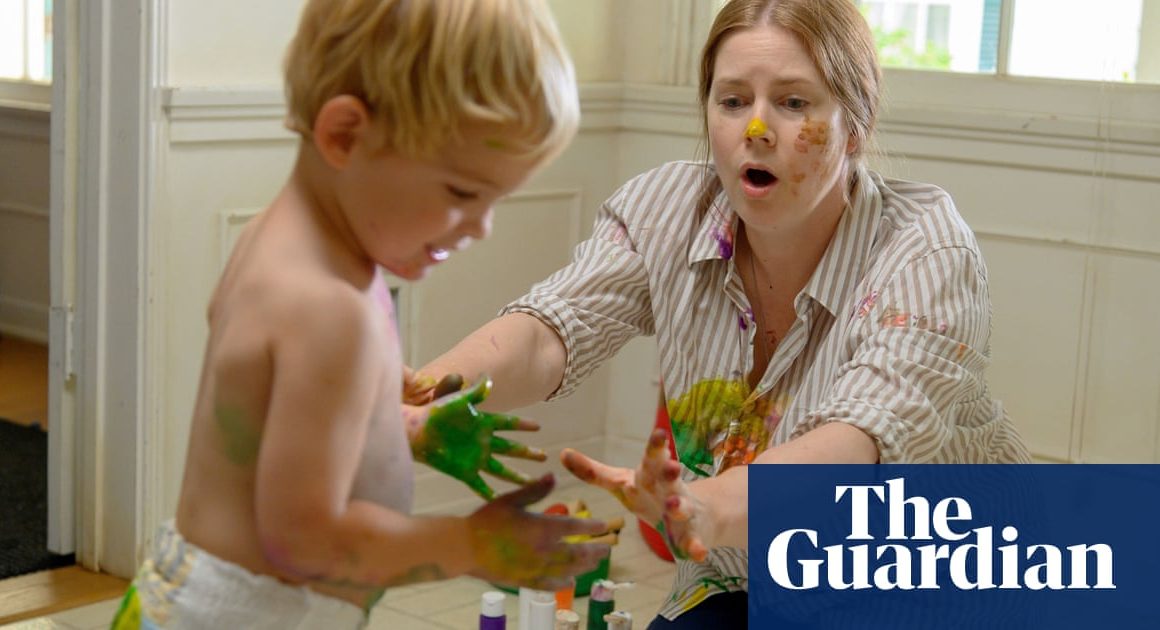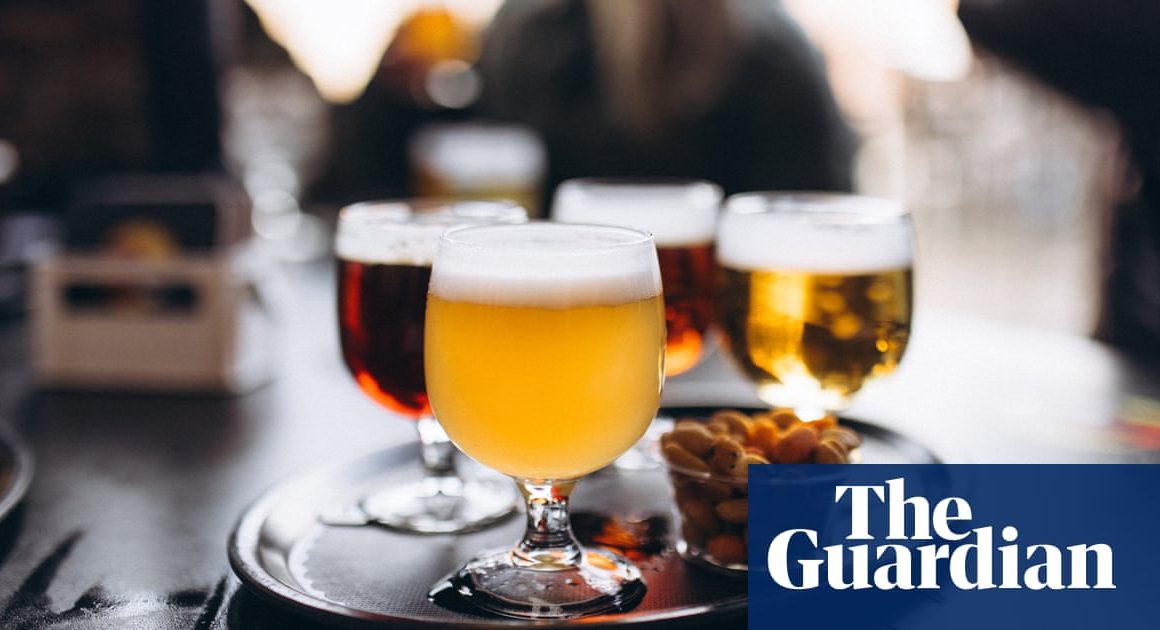Imagine a room full of women. Imagine half of them breaking a bone. What will it be? Hip? Spine? Wrist? Neck? Imagine the plaster casts, the metal screws, the pain, the immobility, the grief – a third of those who break a hip will die within a year, according to the NHS. The Royal Osteoporosis Society says one in two women over 50 in the UK will get a fracture due to osteoporosis. And that just doesn’t need to happen.
Thanks to many factors, including neglect and gender bias in medicine, midlife women are not told about the simple preventive measures they can take to maintain healthy bones. “Your bones are silent until they break. And then they scream,” says Dr Vonda Wright, a campaigning American orthopaedic surgeon and the author of Fitness After 40: How to Stay Strong at Any Age.
Two-thirds of osteoporosis sufferers are female for a reason: when hormones plummet around menopause, bone strength declines by 10 to 20%. Fragility fractures rocket up from the late 40s onwards. Low bone mineral density means brittle bones look like a Crunchie bar inside, honeycombed with big holes.
When Narelle Chidwick from Henley was 49, she was sent for a Dexa (dual energy x-ray absorptiometry bone scan) by the NHS after injuring her ribs during a family skiing holiday. “They told me I had osteoporosis, a high fracture risk and very low bone density. It was at the level of an 80 or 90-year-old woman. I was shocked. I didn’t see it coming. I had early menopause at 46, but I’d been exercising, doing pilates, eating well.” Now Chidwick and her 80-year-old father both have osteoporosis – but she is determined to try to rebuild her bones.
There are three very effective early ways to protect women (and some non-binary and trans people) from fractures: muscle-building, weight-bearing exercise, along with vitamin D, magnesium and calcium-rich foods, and using hormone replacement therapy (HRT) to slow bone loss and promote new growth.
“We need to identify high-risk women far earlier, long before they break a bone,” says Dr Olivia Hum, a GP and menopause specialist on the British Menopause Society (BMS) advisory council. “Women with low body mass, a history of rheumatoid arthritis, osteoporosis in the family and those who smoke or drink heavily, or had an eating disorder. They need to know about strength training and exercise, discuss the benefits and risks of HRT and understand that it can significantly reduce fracture risk.”
The BMS consensus statement says that HRT “remains an excellent option for prevention, particularly in younger women aged less than 60,” helping women at low risk (with osteopenia, slightly lowered bone density) and even those with established osteoporosis.
While it has proved almost impossible for the NHS to get the sedentary midlife population skipping ropes or lifting weights, it is easy to offer HRT to those suitable. It is approved by the NHS and the US Food and Drug Administration for strengthening bones, as the oestrogen in HRT plays a role in maintaining bone density, balancing the constant removal and regrowth that occurs in menopause. It decreases menopause symptoms, too, which often encourages women to exercise and have a healthier lifestyle.
An Endocrine Review meta-analysis of 57 studies showed HRT can increase bone density by 7% on average over two years and reduce spinal fractures by a third. A decade-long trial in the journal Bone showed HRT increased spinal density by 13%, while the untreated comparison group had 5% bone loss. We also know now that headlines two decades ago suggesting HRT increased breast cancer in the Women’s Health Initiative Study were exaggerated, and have been debunked by menopause societies. Newer body-identical transdermal preparations, such as gels and patches are safer, too, with no increased risk of blood clots, according to the NHS.
Yet healthcare professionals dealing with early fractures rarely consider that option. With a research grant from Henpicked: Menopause in the Workplace, I have worked on an investigation for months with Dr Bill Robertson-Smith, an NHS senior surgical care practitioner at Northampton General Hospital. She sent Freedom of Information requests asking for data from the NHS Fracture Liaison Services (FLS) which treats osteoporosis following fractures in people over 50.
Our data showed that in the past seven years, 356,229 women have been treated by FLS clinics. Out of those, only 169 were offered HRT afterwards. “I was astonished it was so low,” said Dr Robertson-Smith. “Around three-quarters of those women would be over 65, but thousands of younger women in their 50s and early 60s who could benefit from HRT were never offered that option.”
Although early menopausal, Chidwick was not offered HRT by her GP, but she was prescribed bisphosphonate drugs, as well as calcium carbonate and vitamin D. Bisphosphonates inhibit the removal of old bone, particularly when new bone is forming less in menopause – bones are a bit like tree branches, growing, shedding and renewing all the time. Bisphosphonates cost from £50 a year and are the first-line NHS treatment for men and women. But patients often complain of gastrointestinal, joint and flu-like symptoms. Due to that, and perceived lack of effect, around 40% of patients come off bisphosphonates within a year, and 85% within three. Chidwick also looked into lifestyle changes, and was exasperated to receive a hospital letter suggesting she walked for 30 minutes three times a week. “I knew that wasn’t anywhere near enough for bone density – I was already walking 10,000 steps a day and exercising when I got the diagnosis,” she said. Chidwick did her own bone-building research online and found a trainer who was able to create a three-times-a-week strength and impact exercise programme.
Muscles are key to osteoporosis prevention, to holding up our skeletons, explains Dr Gabrielle Lyon, American author of the bestseller Forever Strong. “People think of bones as the end point of this silent disease, but low muscle mass is the first sign of low bone density. The best way to safeguard your independence is to protect your skeletal muscle mass. Muscle is the only organ system we can directly control.”
Also in the States, Dr Wright is leading the charge on female osteoporosis, academically and with a million followers on her Instagram. Wright, 57, explains: “I lift heavy! You need deadlifts, squats, bench-presses, chin-ups. Four reps, four sets. You can also stomp up and down the stairs and that helps, too.” She adds: “Building muscle is the one thing you can do to save your metabolism, save your bones, prevent you from falling down and build brain resilience.”
Dr Wright also authored a groundbreaking 2024 medical paper in the journal Climacteric, which named the problem for the first time in its title: The Musculoskeletal Syndrome of Menopause. “This means the collection of symptoms caused by oestrogen loss from perimenopause onwards, including joint pain, muscle weakness, decreased bone density and increased risk of arthritis and fractures. Oestrogen doesn’t just increase bone density, it reduces inflammation in our joints. So many women come into my clinic with frozen shoulder at this age, not due to injury, but because of inflammation.”
In the paper, Dr Wright advocates holistically for exercise, vitamins and nutrition (one of her catchphrases is “Sugar bakes you from the inside,” because it’s inflammatory). She also calls for greater use of HRT. She says what’s needed now is a study of the minimum effective doses of oestrogen for prevention. Studies show a small dose of 0.25mg/day works well, which would be good news for women who want to start HRT gently in later life, and Dr Wright said that’s definitely an option. “It’s crazy that women here usually only get Dexa scans once they are 65, when earlier screening would mean we could halt the damage.”
Dr Hum agrees: “GPs can refer you for a Dexa if you fulfil the risk criteria, but sometimes we feel as if we’re just firefighting in general practice and there’s so little time to talk.” She suggests that women can determine their own risk using the risk-checker on the Royal Osteoporosis Society website, and Dexa scans are available privately for upwards of £50. She also said that with more menopause awareness, some women come in asking for HRT to protect their bones, even if they don’t have serious symptoms. “It’s all about individual choice and the risk-benefit balance.”
Exercise is essential as part of that balance. The science around high intensity impact training (Hiit) also interested Chidwick. Hiit is proven to improve bone density in postmenopausal women, and in the American LIFTMOR trial, 101 women over 58 with osteoporosis or osteopenia were assigned to two groups. Those in the conventional exercise group had a 1% loss of bone density, while those doing supervised high-intensity impact training – squats, deadlifts and jumping chin-ups twice a week – gained almost 3% density over eight months. It worked fast.
Why aren’t we getting that message out to women? “Because we’re the Special K generation,” says Chidwick. Gen X grew up with messages favouring skinny over strong. Remember the Special K TV challenge from two decades ago, which told women they could “drop a jeans size in two weeks” by replacing two meals with bowls of sugary cereal? More than three decades after Madonna flexed her biceps on the Blond Ambition tour, there’s still a sense for older generations that muscles are male.
Loss of muscle mass is called sarcopenia – and muscle mass can drop by 10% from early perimenopause to post-menopause. Dr Radhika Vohra, a GP and adviser to the Menopause Charity, agrees and wishes the NHS provided more specific information: “We’d be better doing more social prescribing, sending people on the NHS for six weeks’ free training at a gym – but sadly that’s a postcode lottery.”
Strong muscles make a big difference to balance, too, important if osteoporosis has been diagnosed. Dr Wright talked about the tragedy of seeing frail women after falls, in hospital gowns undergoing massive operations, asking her, “what’s happened to me? I’m not who I used to be.” What actually happens in hospital? I spoke to Dr Robertson-Smith one day as she emerged after working alongside a senior surgeon on a peri-prosthetic fracture: “That’s when they’ve had a metal hip replacement, for example, and have now fractured the bone around it, too. We’ve been operating for nearly three hours on a woman in her 80s, and I’ve just finished screwing a plate on to the length of the upper thigh and suturing the wound.”
The operation takes its toll on an already frail patient and, including rehab afterwards, costs the NHS about £30,000, according to Dr Robertson-Smith. On the front line for the past 11 years, she has grown increasingly frustrated by the lack of preventive care. “The use of HRT wasn’t part of my education in orthopaedics,” she says, “and medical colleagues have said the same.” But medicine works in silos and menopause experts, surgeons, endocrinologists and rheumatologists rarely confer. So the more complex picture is often overlooked. It’s the orchestra of hormones that makes bones work.
Dr Robertson-Smith explains: “The main role of oestrogen in bone health is to prevent bone loss, but we also know that progesterone has an important part to play in stimulating bone growth. There is also a positive association between testosterone and bone mineral density, so all of these hormones matter.” Men with early low testosterone levels are more likely to get osteoporosis, too.
NHS data shows 19% of women are on HRT, a massive increase over the past three years as public menopause knowledge has grown, so that may mean a generational improvement in osteoporosis rates. But increasing prevention would be bad news for the pharmaceutical industry, which makes $16bn worldwide annually from osteoporosis drugs. Pharmaceutical capitalism thrives on sickness care, rather than preventive care.
What really needs to change is that preventive care should be offered to women at a much younger age, ideally in their 40s. Dr Vohra explains that the 40-plus health-check list for all women doesn’t mention osteoporosis or menopause, instead concentrating on high blood pressure, cholesterol, diabetes, body mass index, exercise and alcohol. “General practice gets paid to keep a register of patients already diagnosed with osteoporosis, but they don’t get paid for preventing it. Yet osteopenia is that lovely window when you can change things for women, and we miss it.”
Dr Hum agrees: “This needs to be done at a national level. GPs need to have the time and resources so they can be involved with prevention.”
Dr Vohra has done groundbreaking research on menopause and ethnicity in the UK. A report in the journal Bone showed Asian women are at a similar risk of osteoporosis as white women, yet only 6% use HRT. Risk for Black women is slightly lower, but only 5% use HRT. “Menopause care is lacking for people from economically deprived and ethnic backgrounds. There’s more early menopause, too. Disparities in nutrition, education and poverty mean women are losing bone mineral density earlier and are less likely to get help. We need to be proactive.”
This is a significant public health issue costing the NHS £4.6bn a year for women and men. The Royal Osteoporosis Society says a quarter of people don’t even know what “osteoporosis” means, so we need a public and social media conversation, as there has been for menopause.
The lack of education remains incredibly frustrating, says Chidwick. “What if I’d been given a Dexa scan when I went into early menopause? This is all about mortality and it’s not OK. I want to have a life, so what do I do? I’ve gone out and asked questions, but what about the people who don’t? Putting a Band-Aid on afterwards isn’t working.”
Kate Muir (@menoscandal) is the author of Everything You Need to Know About the Menopause, published by Simon & Schuster at £9.99. Buy it for £8.99 at guardianbookshop.com.
The Henpicked: Menopause in the Workplace “Give Your Bones a Break” campaign launches on 7 November. For information, go to menopauseintheworkplace.co.uk










